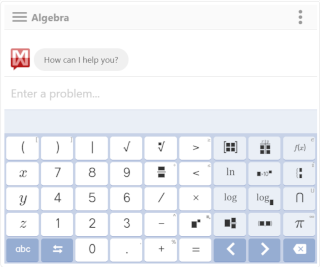Chemistry WCH13 May 2020 Questions & Answers
Questions And Worked Solutions For Chemistry WCH13 May 2020
IAL Chemistry WCH13 May 2020 Questions - Complete Paper (pdf)
- A white anhydrous crystalline solid A contains one cation and one anion.
Solid A was heated in a test tube and the following observations were made.
A brown gas was produced.
A glowing splint relit when placed in the mouth of the test tube.
A white solid remained in the test tube.
(a) Identify, by name or formula, the two gases formed.
(b) Identify, by name or formula, the anion present in A.
(c) A flame test was carried out on A and a green colour was observed.
Identify, by name or formula, the cation present in A
(d) Give the formula of solid A and the formula of the white solid formed on heating.
(e) About 5cm3 of an aqueous solution of A was placed in each of two test tubes.
Five drops of aqueous sodium hydroxide were added to one of the test tubes and five drops of dilute sulfuric acid were added to the other.
In the table give the observations you would expect to make - (a) A student was provided with aqueous solutions of four compounds:
hydrochloric acid
potassium carbonate
silver nitrate
sodium chloride
Four bottles, labelled B, C, D and E, each contained one of the solutions.
The student mixed pairs of the solutions to determine which was in each bottle
(b) To identify the cations in sodium chloride and potassium carbonate, a student carried out flame tests using the following method.
Step 1 A sample of solid sodium chloride was placed on a watch glass and a few drops of concentrated nitric acid were added. The solid and acid were mixed to form a paste.
Step 2 A length of copper wire was dipped into the paste.
Step 3 A Bunsen burner was set up with the air-hole closed. The copper wire containing the paste was placed into the Bunsen burner flame and the colour observed.
Step 4 The procedure was repeated using solid potassium carbonate.
For each of the Steps 1, 2 and 3 give an improvement in the procedure explaining why the change is necessary.
- This question is about three organic liquids, F, G and H.
(a) Tests were carried out on F and G.
Each liquid contained one functional group.
Test 1
A spatula measure of phosphorus(V) chloride, PCl5 , was added to about 1cm3 of each liquid in separate test tubes.
Any gas evolved was tested with damp blue litmus paper.
(i) Identify, by name or formula, the steamy fumes produced in Test 1.
Test 2
About 1cm3 of sodium hydrogencarbonate solution was added to 1cm3 of each liquid in separate test tubes.
(ii) Identify, by name or formula, the gas produced in Test 2
(iii) Using the results from Tests 1 and 2 and the information at the start of the question, name the functional groups present in F and G.
(iv) F and G both have a molar mass of 46g mol-1.
Draw the displayed formula of F and G.
(v) State whether or not it is possible to distinguish between F and G using infrared spectra. Justify your answer.
Wavenumber values are not required.
(b) The organic liquid H is a pheromone thought to be involved in communication between rabbits. - The enthalpy change of neutralisation of hydrochloric acid may be determined using
the apparatus shown
Procedure
Step 1 Place 25.0 cm3 of 1.00 mol dm-3 hydrochloric acid in a polystyrene cup. Record the temperature of the hydrochloric acid.
Step 2 Record the temperature of 30.0 cm3 of 1.00 mol dm-3 sodium hydroxide.
Step 3 Add the sodium hydroxide to the hydrochloric acid in the polystyrene cup.
Stir the mixture and record the maximum temperature reached.
(a) (i) Give a reason why an excess of sodium hydroxide was used.
(ii) The diagram shows part of the thermometer when the temperature had reached its maximum.
(b) Calculate the enthalpy change of neutralisation of hydrochloric acid.
Include a sign and units in your answer
(c) The experiment was repeated using a glass beaker instead of a polystyrene cup.
Explain how the value obtained for the enthalpy change of neutralisation would be different.
5 A student carried out an experiment to identify the metal M in the hydrated carbonate M2CO3.10H2O.
A solution was made by dissolving 3.56g of the hydrated metal carbonate in distilled water and making the volume up to 250.0 cm3 in a volumetric flask.
25.0 cm3 of this solution was placed in a conical flask and titrated with 0.100 mol dm-3 of hydrochloric acid.
The equation for the reaction is
Try the free Mathway calculator and
problem solver below to practice various math topics. Try the given examples, or type in your own
problem and check your answer with the step-by-step explanations.

We welcome your feedback, comments and questions about this site or page. Please submit your feedback or enquiries via our Feedback page.